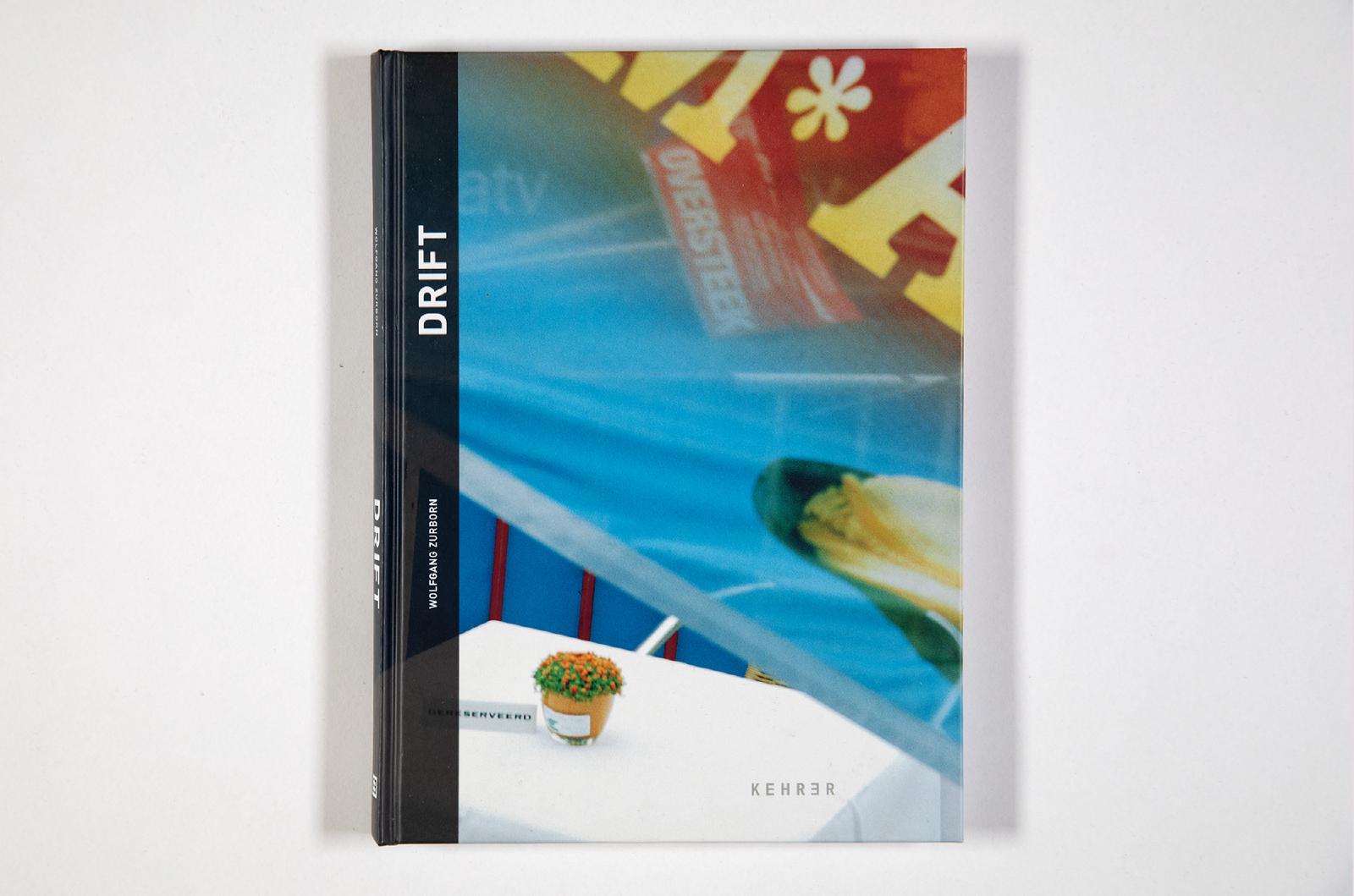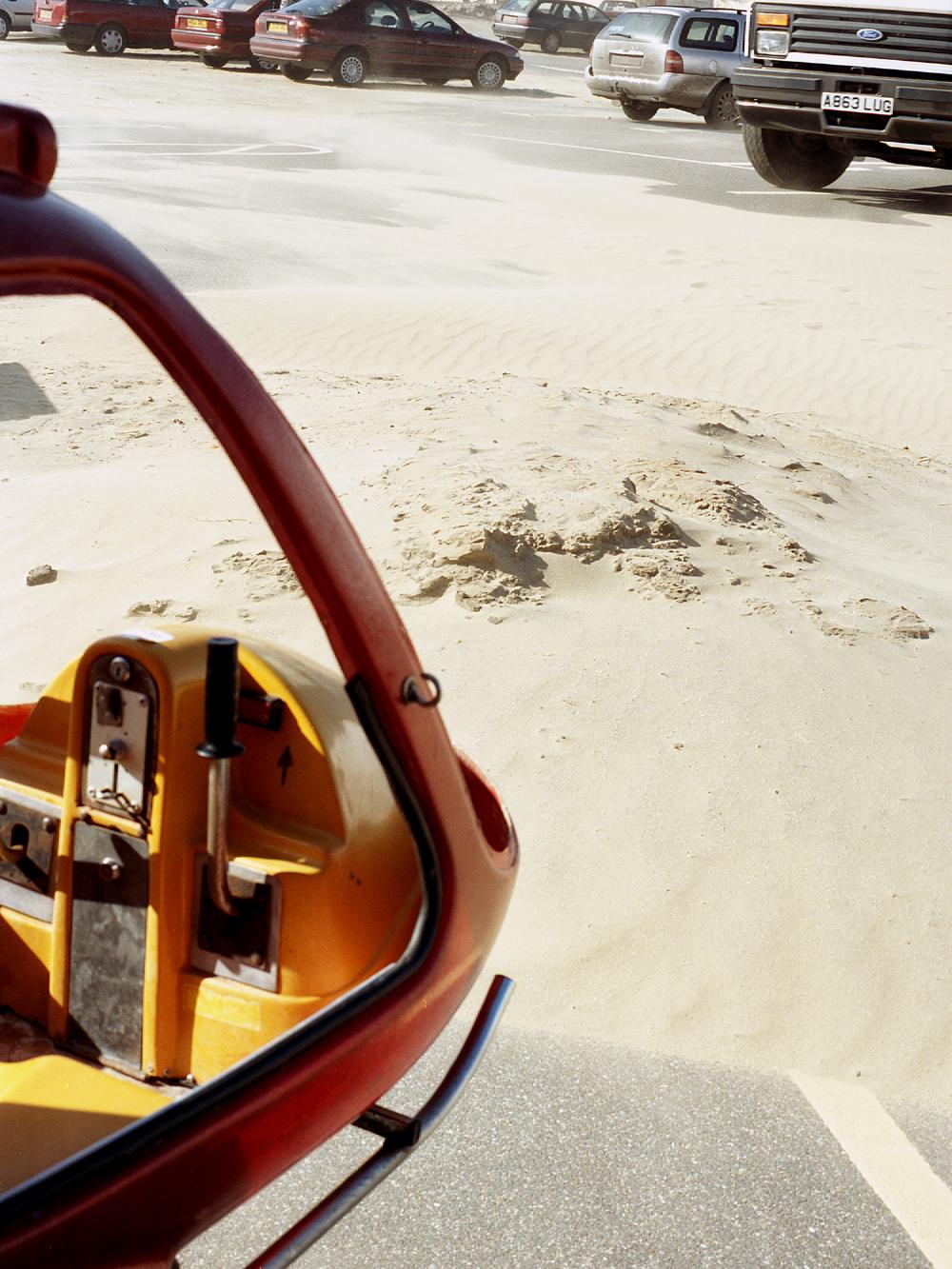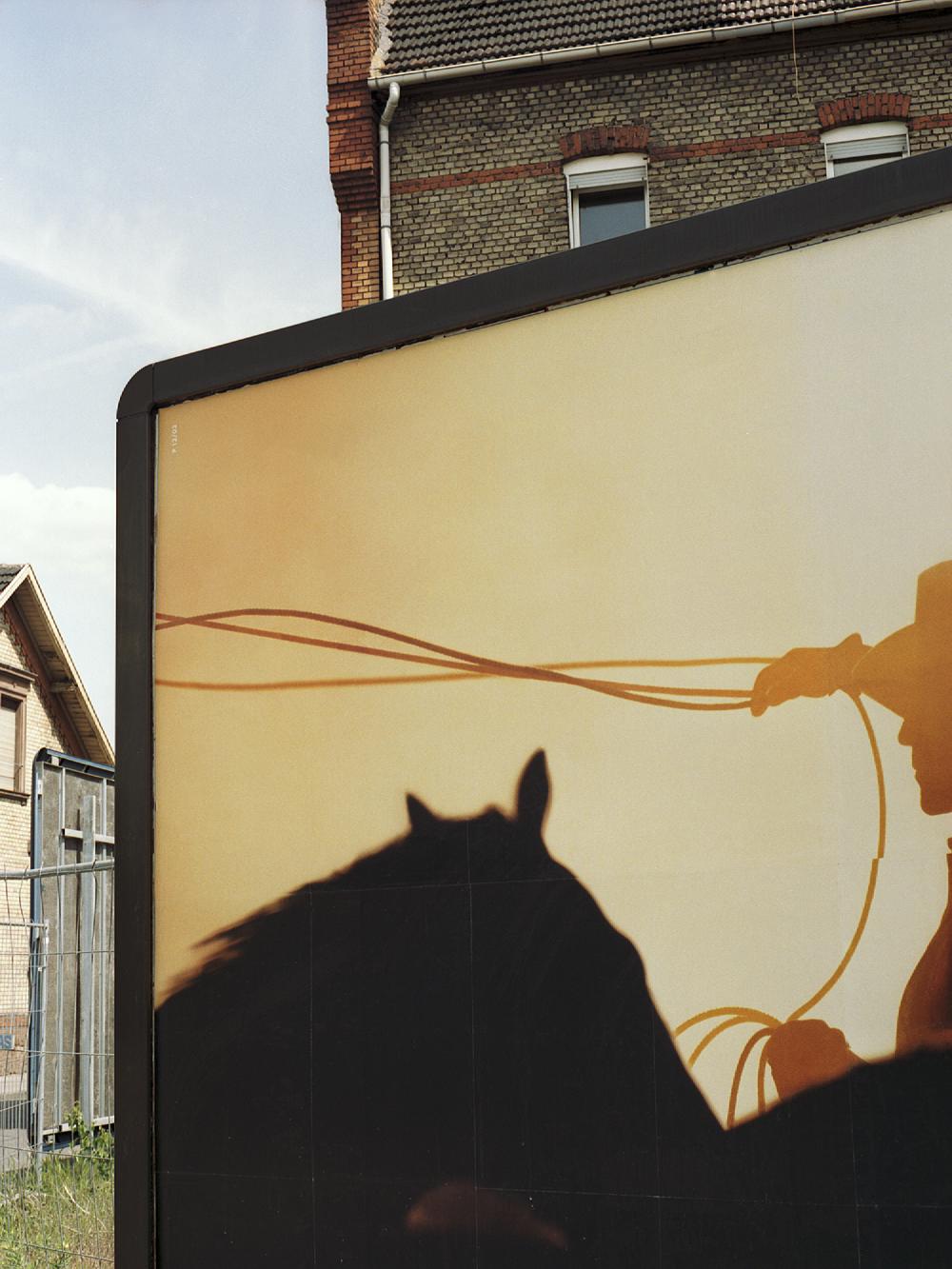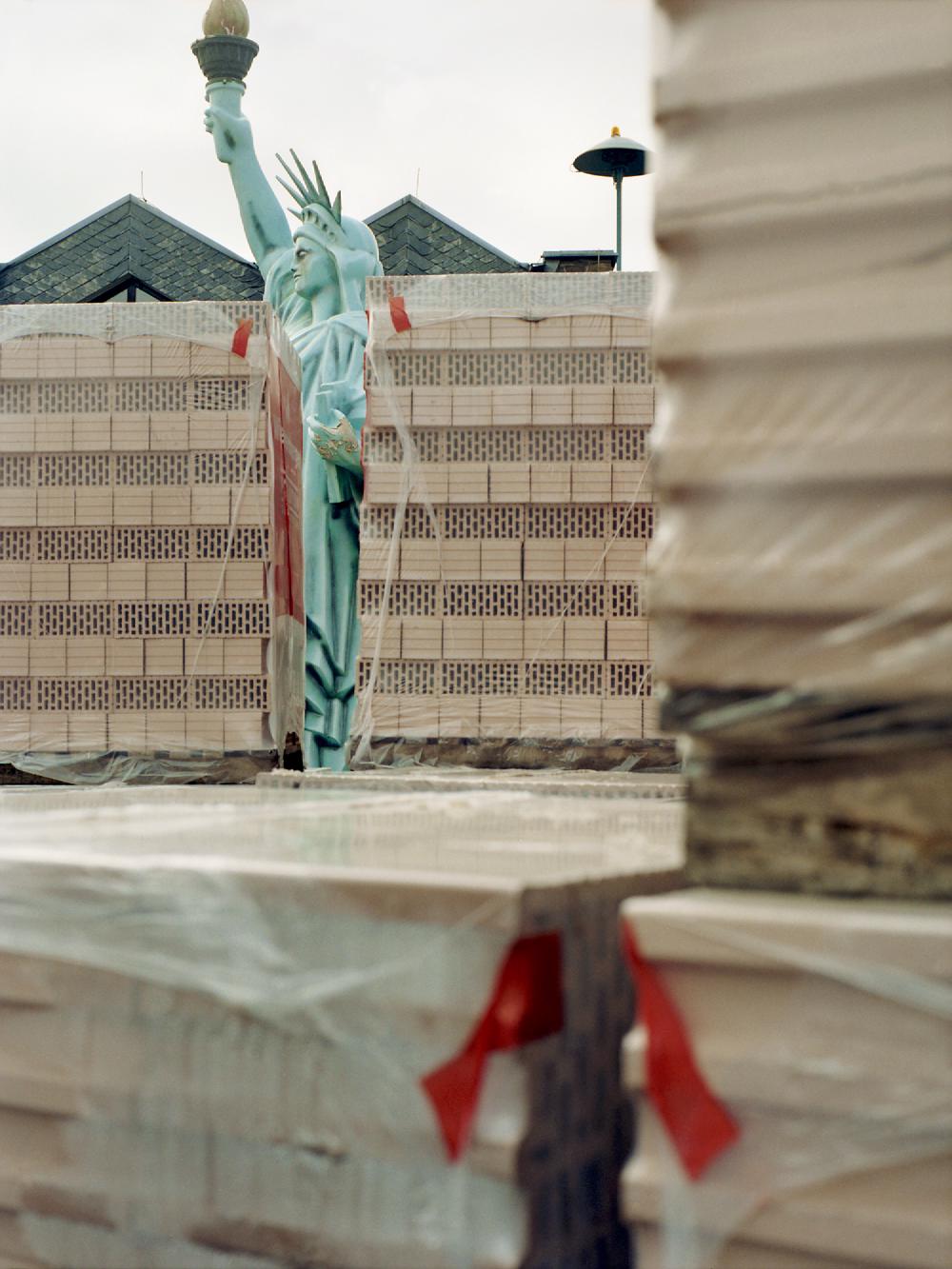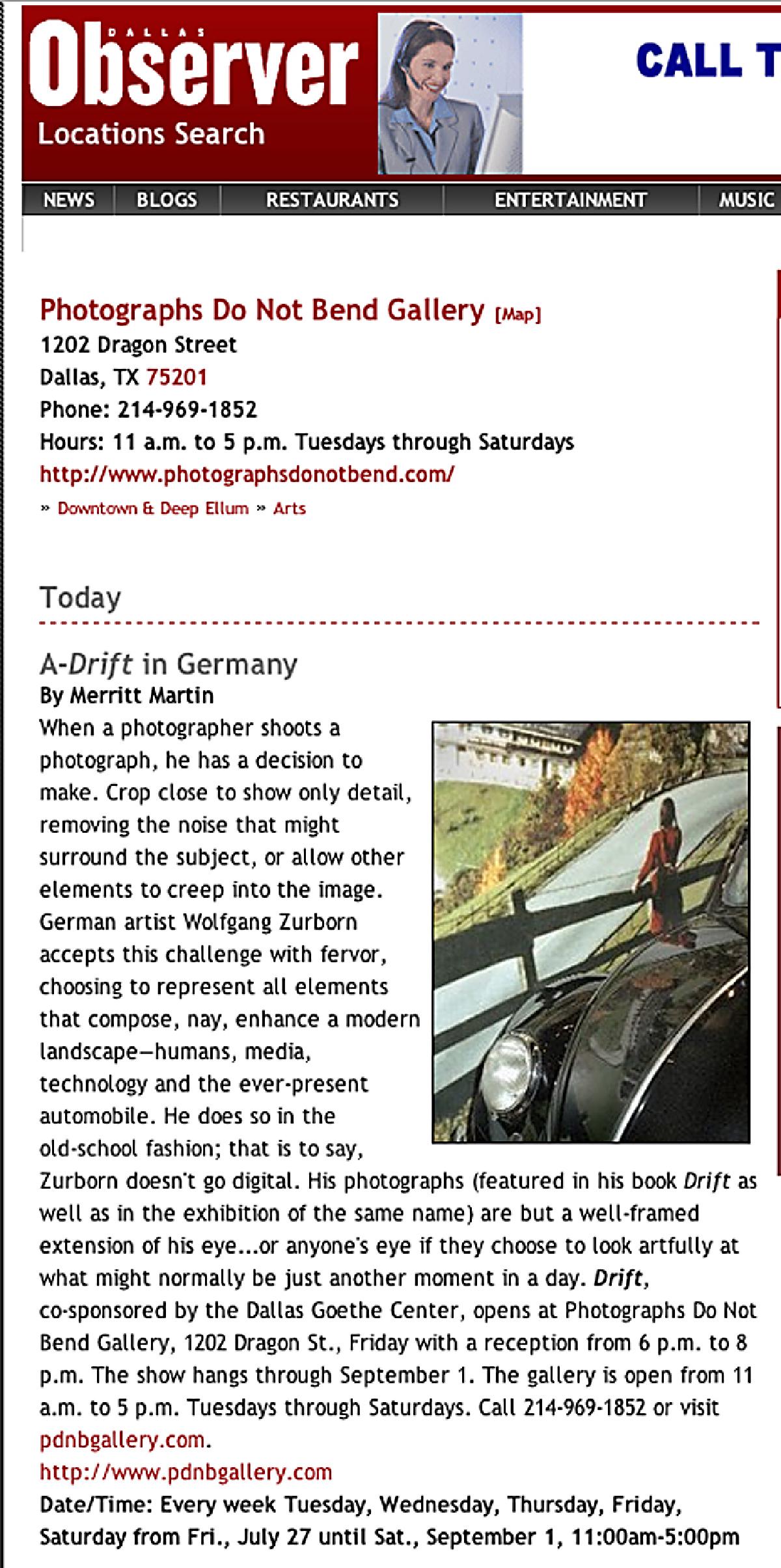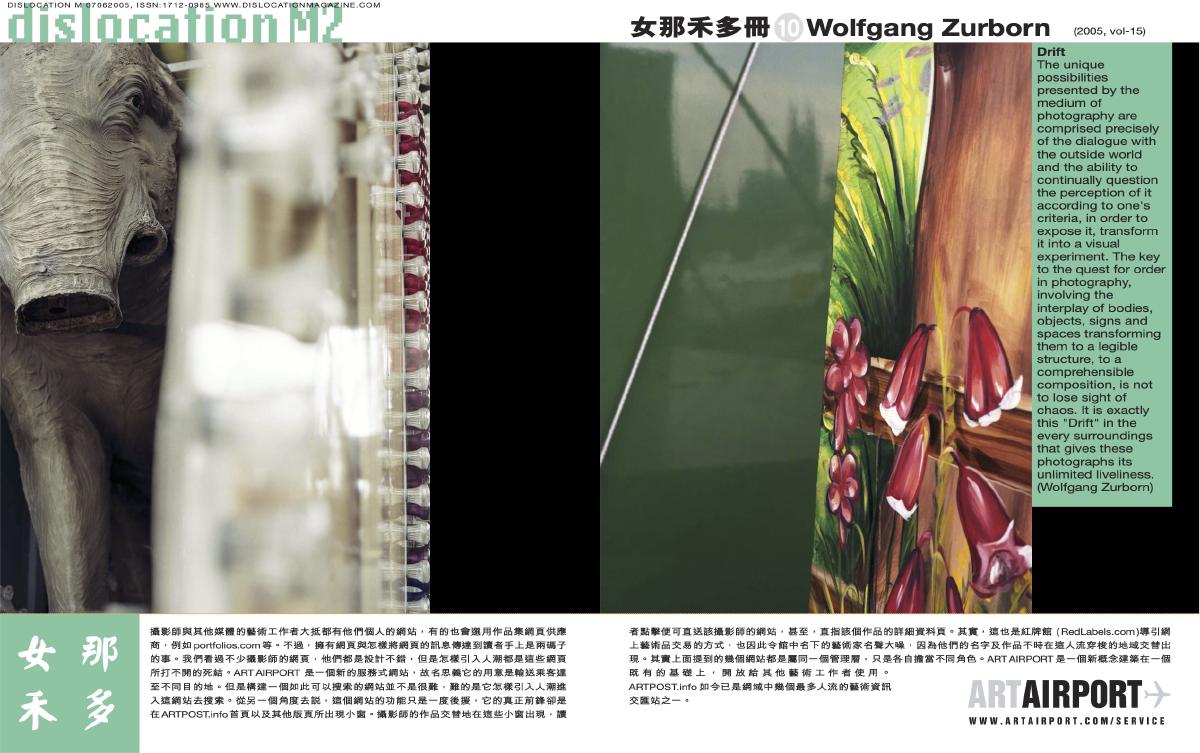Drift
Drift
Book publication by Wolfgang Zurborn
Text by Peter V. Brinkemper, Englisch/Deutsch
Layout: Heine/Lenz/Zizka, Frankfurt/Berlin
144 pages,59 col.illu.,
24,5 x 18 cm, hardcover
Kehrer Verlag, 2007
ISBN 978-3-939583-68-4
Drift received the German Photobook Prize 2008.
Drift - A new art of photographic navigation
[…] With Drift, Wolfgang Zurborn - alongside the prevailing purist spatial and architectural icons of contemporary German photography, the contemporary German photography, the Andreas Gursky paradigm - brings an important counterpart into play: the dynamics of integration, differentiation, individualisation, movement and temporal change in the image, a piece of “On-the-Road-Experience - made in Germany”. And not only on the content level of the image or on the level of the formal composition, but as a discourse of the visual conditions of the possibility of photography […].
Peter V. Brinkemper
German Photo Book Award 2008 for Drift
The title of Winner of the German Photo Book Award 2008, which was thus awarded to the books, stands for outstanding photographic quality, a convincing overall aesthetic impression as well as for an outstanding phototechnical and photo-historical achievement.
The prize was awarded to books by, among others: Olaf Otto Becker, Edward Burtynsky, Cristóbal Hara, Jacob Holdt, Brigitte Kraemer, Christian Lutz, Walter Niedermayr, Urs Odermatt, Paolo Pellegrin, Ricarda Roggan, Margherita Spiluttini, Lars Tunbjörk, Tim Walker, Henry Wessel, Wolfgang Zurborn
Photographs
| Solo exhibitions | ||
|---|---|---|
| 2020 |
Sights Sights Iris BookCafè & Gallery, Cincinatti, United States |
|
| 2011 |
Drift 44 Gallery, Brügge, Belgium |
|
| 2010 |
Drift Uno Art Space, Stuttgart, Germany |
|
| 2009 |
Drift Loris, Galerie für zeitgenössische Kunst, Berlin, Germany |
|
| 2009 |
Drift – Fotografien 1980-2006 Haus der Photographie, Deichtorhallen, Hamburg, Germany |
|
| 2008 |
Drift FSM Gallery, Florenz, Italy |
|
| 2007 |
Drift Photographs Do Not Bend Gallery, Dallas TX, United States |
|
| 2007 |
Drift Blue Sky Gallery, Portland OR, United States |
|
| 2006 |
Drift Hexgalleries, Heks, Belgium |
|
| Group exhibitions | ||
|---|---|---|
| 2017 |
Um ein Haar mit Stefanie Minzenmay Studio Bronx, Neuss, Germany |
|
| 2014 |
Marks of Honour The PhotoBookMuseum, Köln, Germany |
|
| 2012 |
Mistigris - German Contemporary Photography Kolga Tbilisi Photo Meeting Tseretili Museum, Tiflis, Georgia |
|
| 2010 |
Street Photography Now Contributed Studio for the Arts, Berlin, Germany |
|
| 2008 |
How to Hang a Book - Six Case Sudies Fotografie Forum international, Frankfurt, Germany |
|
| 2007 |
Drift Third Lianzhou International Photo Festival 2007, Lianzhou, China |
|
| 2006 |
Kommen und Gehen Deutsche Fotografische Akademie, Echterdingen, Germany |
|
| 2005 |
Marks of Honour – A striking Library FOAM und Gallerie van Zoetendaal, Amsterdam, Netherlands |
|
| 2005 |
Drift im Rahmen des Fotonoviembre Teneriffa, Spain |
|
Reviews
Wolfgang Zurborn
by Niko Havranek & Sebastian Gansrigler
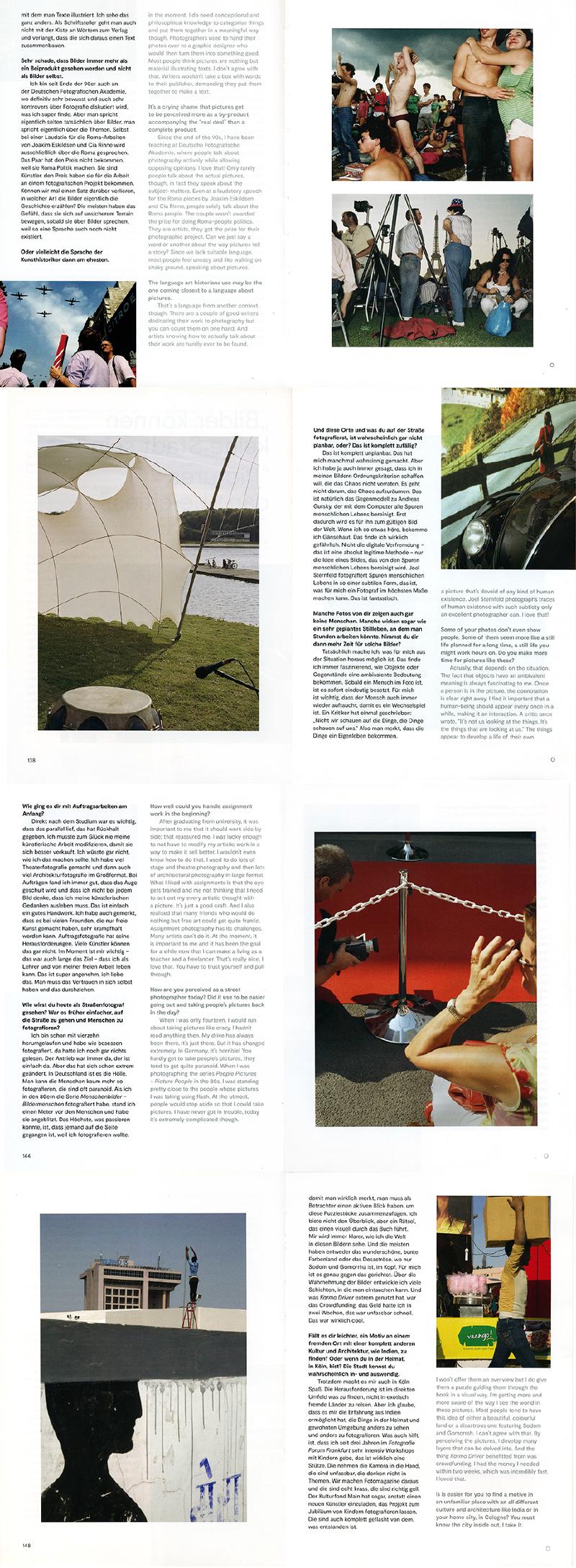
Interview by Niko Havranek & Sebastian Gansrigler with Wolfgang Zurborn on 28 pages with 24 images from the series “Frontgarden of Illusios”, “People Pictures - Picture People”, “LUsionen”, “dressur real”, “At the Centre of Speed”, " Drift", “Catch”, “In the Middle of the West” and “Karma Driver”
Paper Trails
by Rick Poynor
Paper Trails by Rick Poynor
….Somewhere in the back of my mind were some pictures I had seen in a book shown in an exhibition of about 500 recent photography volumes, which concluded the Arles festival. One example in the book, from German photographer Wolfgang Zurborn, appealed to me. His image seemed to drift off course — hence the book title, Drift — sliding from one subject to another and combining different, sometimes wildly disjunctive planes of experience and aesthetic reality within the same shot, rather than singling them out and making the world seem consistent and coherent, as photographs often do.
Since then, I have bought a copy of the book, and Zurborn’s pictures, taken between 1999 and 2005, strike me as genuinely original: They capture something essential about contemporary experience in a new way. They show how, despite our best efforts to design, style, and regulate the visual environment, it stubbornly fails to cooperate, perhaps because people actually prefer its disorder. This is how we see things for much of the time, too, except we usually take it for granted. It is smoothness, rather than discontinuity, that catches the eye.
Later, looking at some of my pictures of the Avignon posters, it seemed that the more interesting ones had picked up traces of Zurborn’s way of seeing—mostly by chance, since they were taken on the fly with little calculation. It was only then, away from the fierce glare of the Provence sun, that I saw how oddly these strangely formed paper totems, sprouting on the sidewalk, relate to their backgrounds. The spatial divisions are angular, irregular, broken. The parts won’t fit together. I especially like what the pictures do to the traffic: The cars become blurred elements relegated to the back and margins of the images. It makes the city seem more human.
To Explore Walter Benjamin' Public Culture Through The Lens
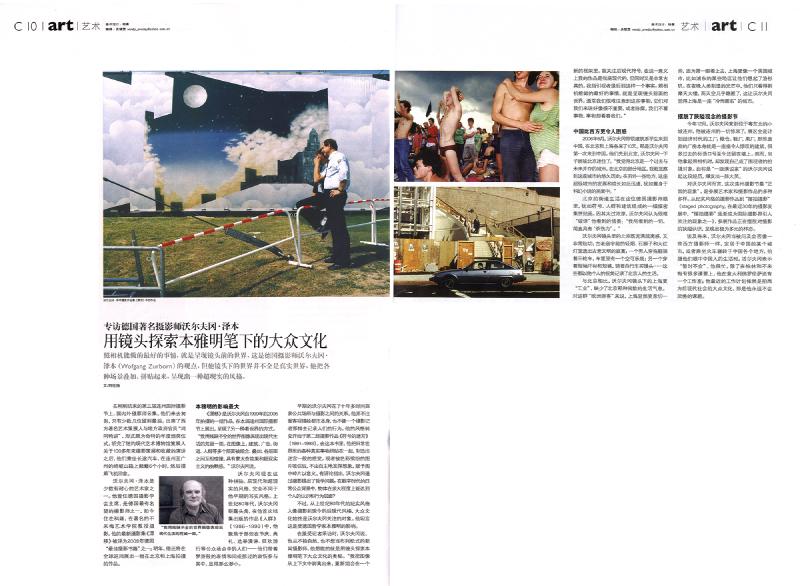
To Explore Walter Benjamin’ Public Culture Through The Lens
A lot of Chinese and international photographers got together during the 3rd Lianzhou International Photography Festival which just concluded days ago. The artists came and left in a hurry, only a small part of them stayed till the end of the award ceremony. After attending the peculiar award ceremony in which the western famous curators couldn’t have a really conversation with the local officers, and the speech which given by the curator from New York about the collection of MoMa since 100 years ago, all the guests leave to Guangzhou by the bus for 6 hours, and back home by plane. Wolfgang Zurborn is one of the few artists who can wait till the last. He was the chairman of the Photography Committee of Germany. Now he lives in Cologne, he is one of the most famous German Photographers, and he teaches photography in the Bremen Art College. His new photography book DRIFT was awarded THE BEST PHOTOGRAPHY BOOK in Germany. In 2008, he will do an exhibition of the works which taken in Beijing and Shanghai around the world.
Most Influenced by Walter Benjamin
DRIFT was exhibited in Lianzhou this year, is a series which taken since 1995 to 2005. This series showed another way to see the world. “I want to show the ridiculer aspect of the modern world by fragmentary images. In these works, the architects, advertisements, streets, and men are collaged and laid, every layer collided each other which lead the effect of montage and surrealistic humors.” Wolfgang said.
Wolfgang’s collaged, post modernistic, surrealistic style now is totally different from his early works. 80s in the last century, Wolfgang published his work PEOPLE PICTURES – PICTURE PEOPLE (1993-1996). In this book he focused on the people who had somnambulated expressions and sweeping sadness in the celebrations, ceremonies, voting speeches, carnivals and other public locations, it seems that the people were very paltry. In the early years, Wolfgang spent more than 10 years to explore the relationship between public and the photography instead of describing the city itself or a photojournalist to documentary the people. His works style started to change since his second photography book IN THE LABYRINTH OF SIGNS (1991-1993). In this series, he pasted up the ordinary things from the daily world to create a feeling like a labyrinth. The audiences are attracted by the colorful images, and then imagined to given significance to the fragments in the pictures. Some critics pointed that Wolfgang’s work leads some philosophy questions such as: In the background of ordinary public in the digital world, how do the objects reach the personal knowledge and action?
Anyway, since the documentary portraits photography in the 80s to now the postmodernism, Wolfgang always concerns the public culture. He confessed that he was influenced by German Philosopher Walter Benjamin.
During the interview, Wolfgang said he neither photos the natural, nor be a journal photographer like Henri Cartier-Bresson. What he wants to do is searching for the secrets of Walter Benjamin’s Public culture by his lens. “I make the images independent from the background and re-combinate them in a new frame. I concern the post modernistic signs, which means my work is definitely postmodern but meantime, they are also very classical. I lead the audiences back to the reality that the best thing cameras can do is expressing the world in front of the lens. Normally, we ignore the objects because it seems that they are not important for us, even hackneyed. We are not looking at them, but they are staring at us.”
China is more confused than the Western
In June, 2006, this is the first time Wolfgang came to China, with his students of architecture, stayed in Beijing and Shanghai separately for 10 days. Wolfgang was fascinated by Beijing when he got there. “I think Beijing is a city in which existing the past and future meanwhile. In some part of Beijing, I could feel the long history of the city; in some other parts, it felt that in a science fiction that the super city is developing rapidly.” The daily life of Beijing is like an intense collages which combined by the signs, people and architectures in Wolfgang’s opinion. Because of the intensity, Wolfgang found it’s difficult to decode the scenes he saw. ”What I saw has simply execution.”
In Wolfgang’s camera, Beijing shows a sense of alienation, but quiet close to the reality: The light smoke in front of an old temple, a stone lion, and the red lanterns show the loneness of the old culture; a man wearing baboosh was riding a three wheel bicycle, in the basket, there is an empty Coca-Cola bottle. Another man who is buying steaming bread on the bike who was wearing a short sleeves T-shirt and short pants… These are all from his angle to observe the Beijing residents’ life. Comparing to Beijing, Shanghai in Wolfgang’s camera is more industrial, which is lacking the leisure of Beijing. To the European tourists, Shanghai is more familiar, because it is more like an American city in the first sight. Some places of Pudong remind them Los Angeles. In the artificial light during the evening, only the skyscrapers can be seen, the sky is hidden. In Wolfgang’s eyes, Shanghai is a city which is cold and anonymous.
The photography festival which cast off the parochial conception
In the December, Wolfgang was invited to Lianzhou, a small city which lies in the northeast of Guangdong Province; he was surprised by everything there. The exhibition spaces are factories left from the planned economy period: Granary, Shoe Factory, and Candy Factory. The scrap factories are surprising architectures themselves, a lot of slogans still left on the wall. However, when he took the pictures, he found he became the objects whom be photographed. The first class speaker burst a big laugh when he told me about this experience. To Wolfgang, the best impression of LIPF 07 is it involved a lot of different artists and exhibitions. From the documentary works to the staged photography, the works are casting off the parochial cognition of photography, presenting multiple situations. About the future, Wolfgang was asked that whether he would be like some other foreign photographers that selecting a city in China and stay, or travel around China by train to photograph the Chinese life. Wolfgang said not now, he was busy, he has a lot of courses in Berlin and Bremen, and he also has a studio in Florence, Italy. His recent work plan is public culture of western postmodernism as before which is a never boring topic for him.
Wolfgang Zurborn at Photographs Do Not Bend
by Charissa N. Terranova
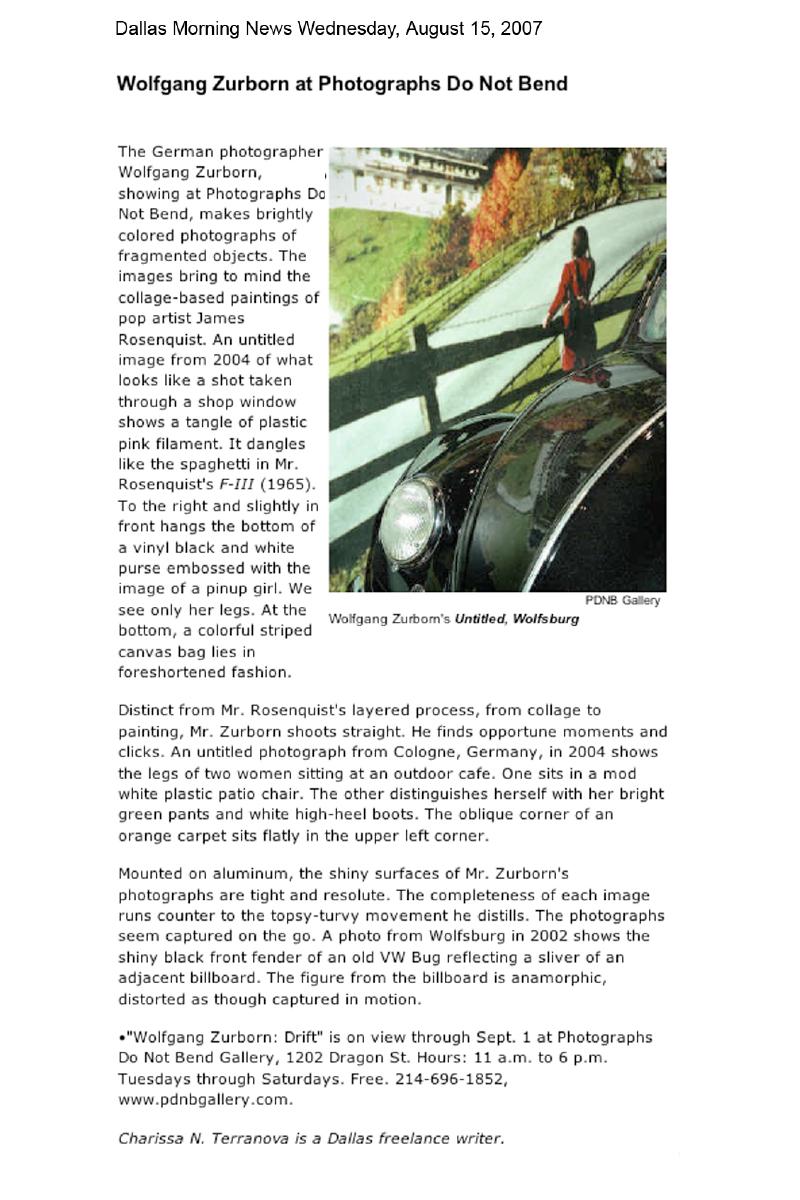
The German photographer Wolfgang Zurborn, showing at Photographs Do Not Bend, makes brightly colored photographs of fragmented objects. The images bring to mind the collage-based paintings of pop artist James Rosenquist. An untitled image from 2004 of what looks like a shot taken through a shop window shows a tangle of plastic pink filament. It dangles like the spaghetti in Mr. Rosenquist’s F-III (1965). To the right and slightly in front hangs the bottom of a vinyl black and white purse embossed with the image of a pinup girl. We see only her legs. At the bottom, a colorful striped canvas bag lies in foreshortened fashion.
Distinct from Mr. Rosenquist’s layered process, from collage to painting, Mr. Zurborn shoots straight. He finds opportune moments and clicks. An untitled photograph from Cologne, Germany, in 2004 shows the legs of two women sitting at an outdoor cafe. One sits in a mod white plastic patio chair. The other distinguishes herself with her bright green pants and white high-heel boots. The oblique corner of an orange carpet sits flatly in the upper left corner.
Mounted on aluminum, the shiny surfaces of Mr. Zurborn’s photographs are tight and resolute. The completeness of each image runs counter to the topsy-turvy movement he distills. The photographs seem captured on the go. A photo from Wolfsburg in 2002 shows the shiny black front fender of an old VW Bug reflecting a sliver of an adjacent billboard. The figure from the billboard is anamorphic, distorted as though captured in motion.
“Wolfgang Zurborn: Drift” is on view through Sept. 1 2007 at Photographs Do Not Bend Gallery, 1202 Dragon St. Hours: 11 a.m. to 6 p.m. Tuesdays through Saturdays. Free. 214-696-1852, www.pdnbgallery.com.
Charissa N. Terranova is a Dallas freelance writer.
